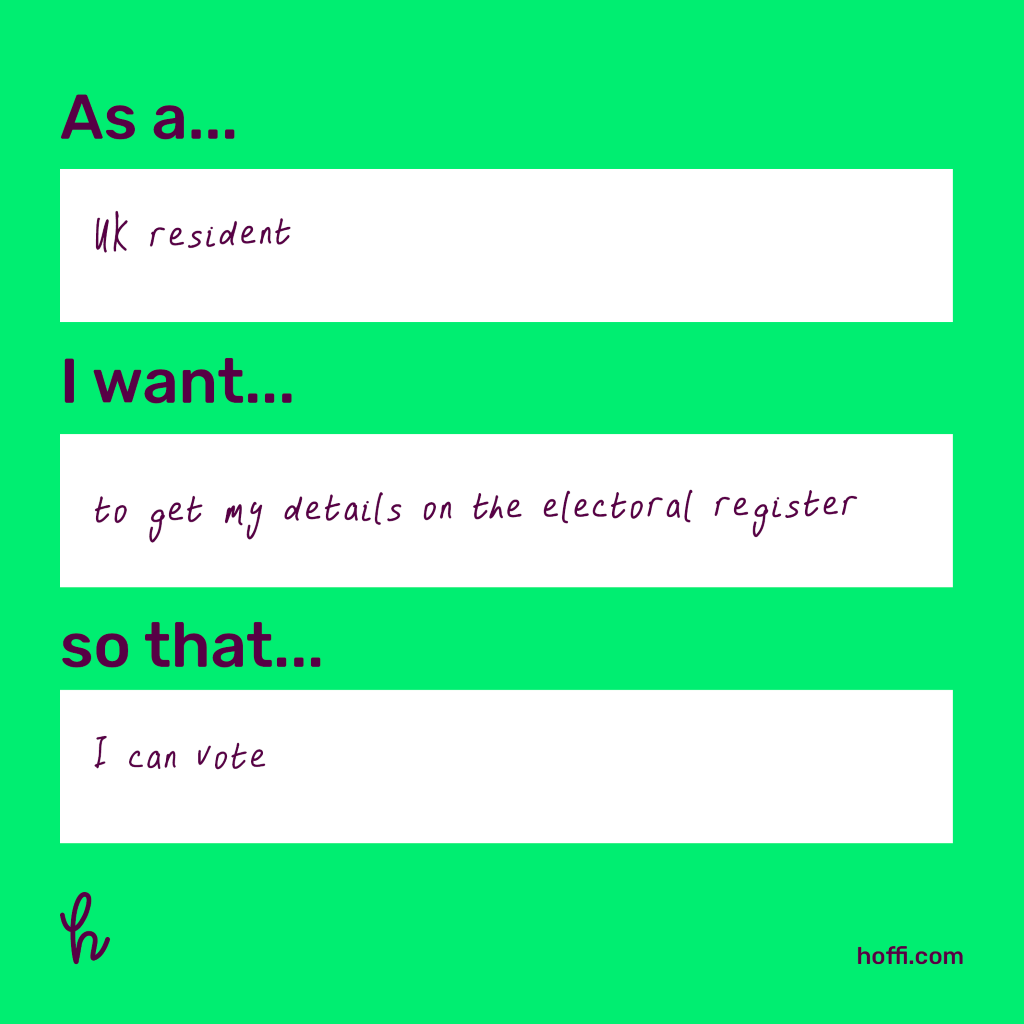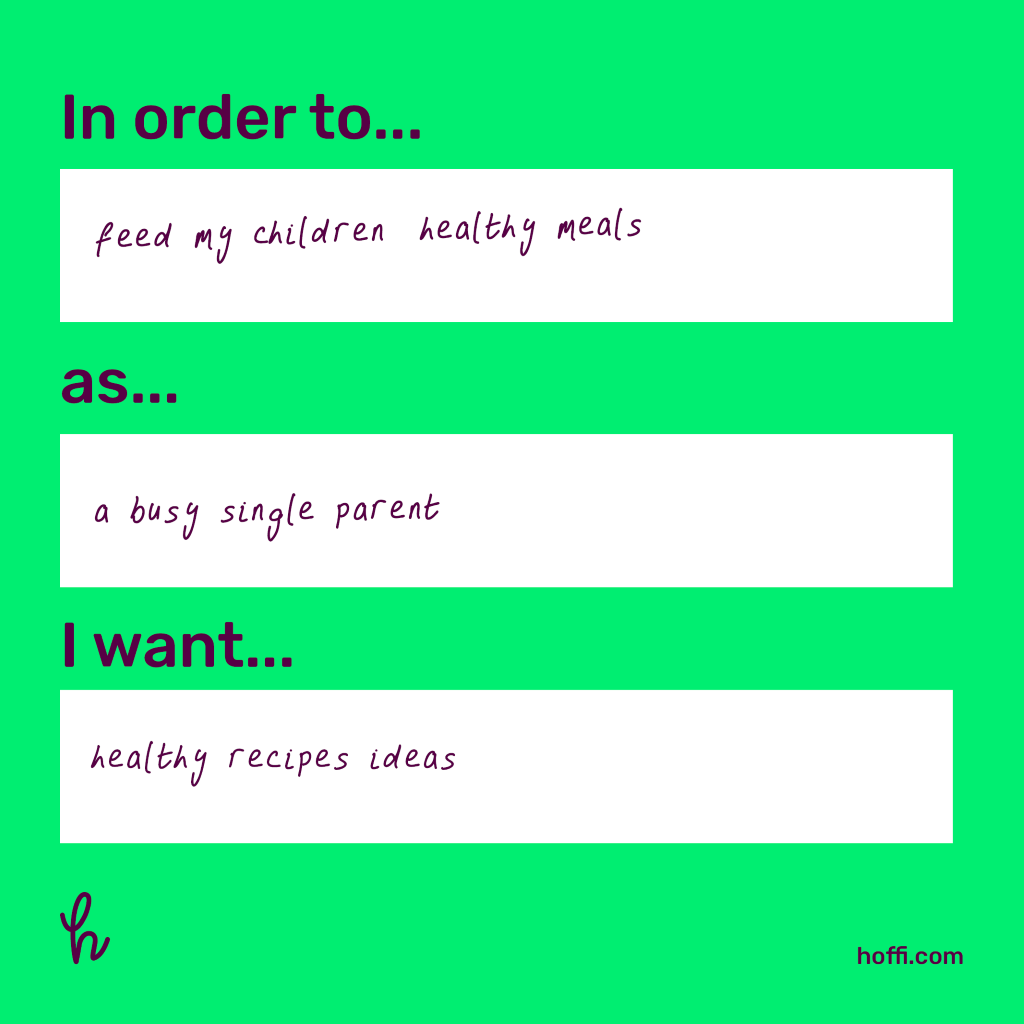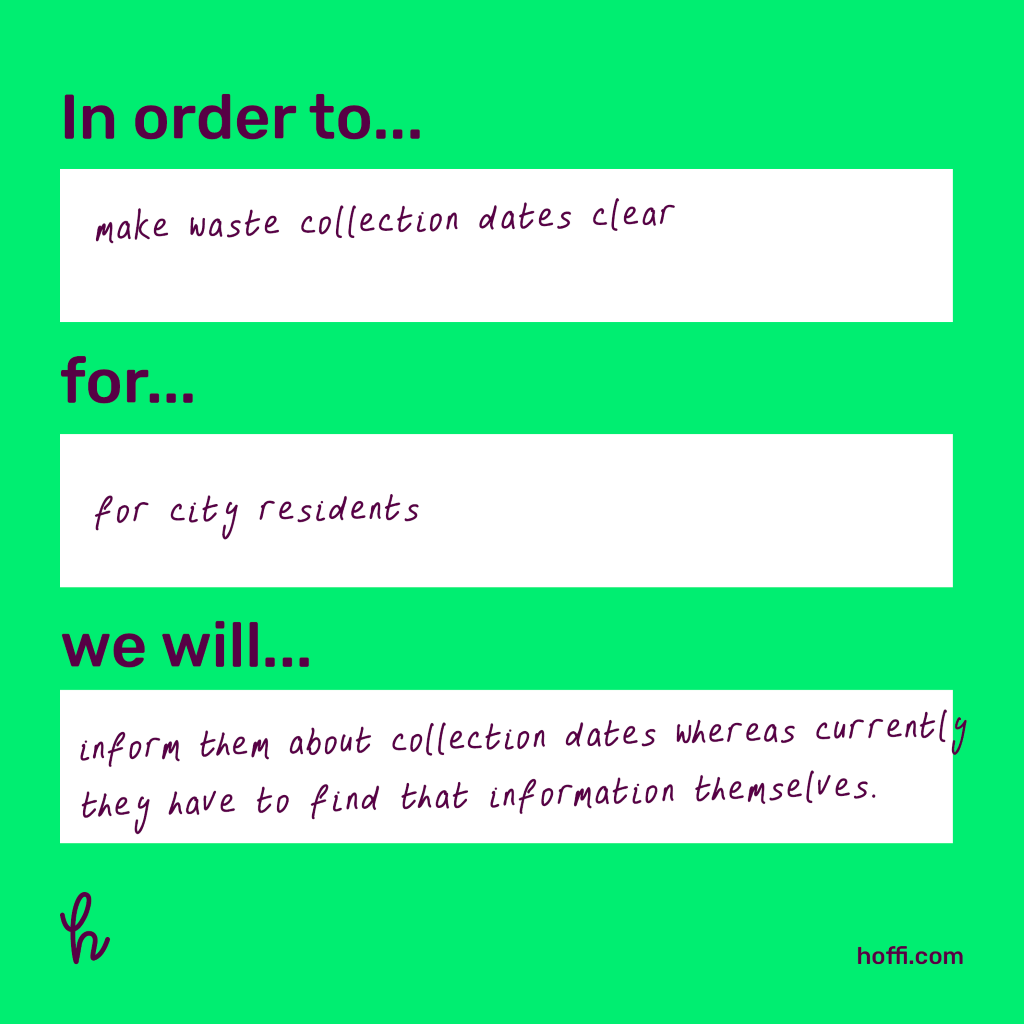You’ve done your research and your project is at that critical stage where its focus shifts from learning about your users' problems to actually solving them. User Stories are a key tool during this transition, but what are they, and how do you write them?
User Stories are descriptions of the wants and needs of people interacting with your brand, product or service. They keep the project team focused on the goals of users and ensure you’re working to solve the right problems. User Stories can also aid project management because they help break projects down into smaller pieces. These can be organised into milestones, assigned to project teams or fed into frameworks like Kanban.1, 2
User Stories can be written however you prefer. It’s best to keep each story short, usually a single sentence, explaining who the person is, what it is they want and why they want it.
Who
This is who you’re trying to help so it’s important to be specific. It could be:
- A type of person or group of people, like an entrepreneur or parent
- A role within the project team, like a content editor or team leader
- The name of a Persona, if they’re being used and all team members are familiar with them
It should not be:
- A generic group like Welsh Speakers or Visitors
- An aspect of the project itself like “the brand” or “the website”
Be as descriptive as needed and include any information that fits the story you’re trying to tell — for example, “a student” could be better described as “a mature comp-sci student”.
What
This should be a description of what the person wants to do or what they’re trying to achieve. This represents the problem that you’re working to solve so it’s crucial to get right. Try to:
- Limit each story to a single action
- Break large or complicated tasks down into smaller stories
- Avoid describing a feature or a solution — for example “I want a Save button” suggests a feature, whereas “I want to return to my application” describes a want or need
Why
Here is where you explain the point of the story and why it’s important to the user. It should:
- Demonstrate the overall benefit of the story
- Show how the task fits into a bigger picture
These outcomes would ideally be quantifiable, allowing you to measure the impact of your work. For example, if you worked to resolve the following story, “As a returning customer, I want to reuse my address information, so that I can check out faster”, you could monitor a decrease in checkout time.
User Story Templates
There are many benefits to using existing formats when writing User Stores. They’re short, contain all necessary information and make writing stories easy because it’s simply a case of filling in the blanks.

As a, I want, so that
This is a well-known and well-loved format that is recommended by the UK Government Digital Services Team.3 The format highlights the person we’re trying to help by putting them first.

In order to, as, I want
This format places greater importance on the Why part of the story. It does this by changing “so that” to “in order to” and places it at the start of the story.4 The stories can be more compelling because they start with their purpose.

In order to, for, we will
This changes the task of the story so that it is a clear action for the project team by replacing “I want” with “we will” and immediately following it with a verb. An optional “whereas currently” clause can be added to describe any existing functionality around the proposed action if it exists.5
Once you’re happy with your User Stories, it’s time to share them with the project team. It’s important that you discuss each one, think about how relevant they are to the project, their importance, requirements and complexity. This step is crucial because it gives everyone the opportunity to develop a shared understanding of the User Stories before you start working to address them.
We hope this explainer has helped further your understanding about this helpful tool. Just remember that the quality of your User Stories will come from their content and not the templates you use, so don’t be afraid to alter these as you see fit. For the best chance of success, don’t worry about the format, focus on the point you’re trying to make and who you’re sharing it with.
Resources
- User stories with examples and a template
- User Stories - Capturing the User’s Perspective Quickly and Simply (2020)
- Writing user stories (2016)
- RIP As a... I want... So that... (2008)
- “As a, I want, So that” Considered Harmful (2014)
We’ll soon be publishing some common User Stories from past projects alongside other helpful articles on Research and Design. Sign up to our newsletter below for updates.